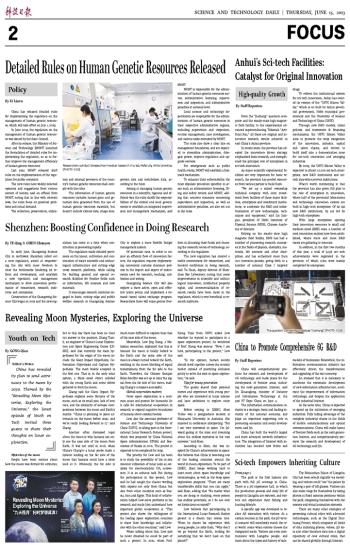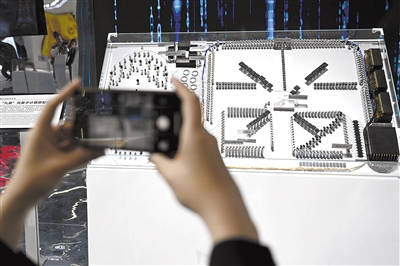
 |
| The quantum computing prototype "Jiuzhang." (PHOTO: VCG) |
From the "Jiuzhang" quantum computer and the steady-state high magnetic field facility, to the experimental advanced superconducting Tokamak "Artificial Sun," all these are original and innovative research results achieved in east China's Anhui province.
In recent years, the province has adopted the innovation-driven strategy, emphasized basic research, and strengthened the principal role of enterprises in sci-tech innovation.
As major scientific experimental facilities are very important for basic research, the province has pooled resources from various parties to build them.
"We set up a mixed ownership technical company with joint investment from builders of those major facilities, enterprises and investment institutions, to accelerate the R&D and industrialization of new technologies, techniques and equipment," said Liu Jianguo, president of Hefei Institutes of Physical Science (HIPS), Chinese Academy of Sciences.
Relying on the steady-state high magnetic field facility, HIPS has had a number of pioneering research successes in the fields of physics, chemistry, materials, life sciences and other disciplines, and has authorized more than 200 invention patents, giving birth to a number of national Class I targeted drugs.
To reform the institutional system for sci-tech innovation, Anhui has created its version of the "USTC Silicon Valley," which is co-built by Anhui provincial government, Hefei municipal government and the University of Science and Technology of China (USTC).
Through new R&D models, talent policies, and investment & financing mechanisms, the USTC Silicon Valley aims to promote the deep integration of the innovation, industry, capital and talent chains, and strives to build itself into a demonstration zone for sci-tech innovation and emerging industries.
By 2025, the USTC Silicon Valley is expected to attract 10,000 sci-tech enterprises, new R&D institutions and sci-tech innovation service institutions.
What's worth mentioning is that the province has also given full play to the role of enterprises in innovation, where half of the provincial laboratories and technology innovation centers are built in high-tech enterprises. Of its 132 new R&D institutions, 85 are led by high-tech enterprises.
With large enterprises opening their innovation resources to small and medium-sized (SME) ones, a number of joint innovation entities have been established, where more and more R&D teams are gathering to innovate.
In addition, in the first two months of this year, a total of 3,156 sci-tech achievements were registered in the province, of which 2,812 were mainly completed by enterprises.


 Next
Next




